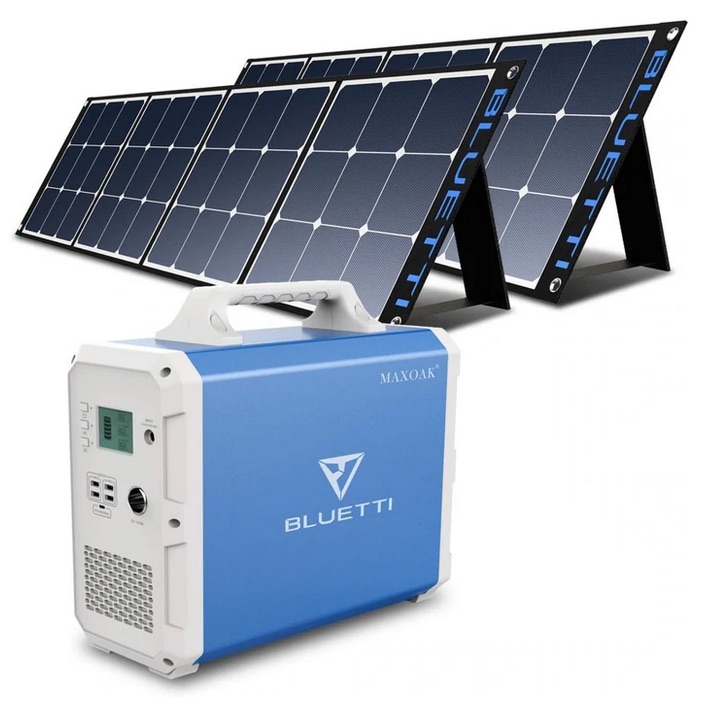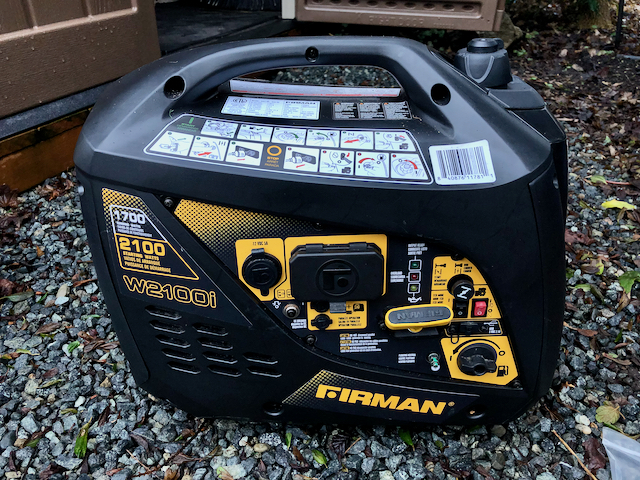Solar Versus Gas Generators
How Do You Decide?
There is a lot to be considered when deciding whether to choose solar versus gas generators. Recently we decided to sell our gas generator and invest in a solar generator. Here’s why.
The main reason we decided to make the switch from a gas generator to a solar generator is the noise a gas generator makes. This also the reason the RV park, where we use our 5th wheel as our residence when not on the road, don’t allow the use of gas generators unless the power is out for more than 3 hours and then, only between 8 AM and 11 PM.
The problem comes with power outages during cold weather when we want to keep the furnace running, use some lights, work with our computers and maybe watch some television. 3-4 hours is plenty of time to run down the limited battery bank we have in our 5th wheel and lots of time to get really cold. The solution for us; a solar generator. It’s silent, super easy to use and provides ample power for most of the short term power outages we encounter.
We could have chosen to expand the battery storage in our 5th wheel and accomplished a similar result, but a solar generator gives us the option of portability. We can of take it with us in our travel trailer when we are on the road.
The other big advantage of the solar generator for us, is the simplicity of use. The solar generator sits in our storage bin and all we have to do is unplug from the power post, attach an adapter, plug it into the solar generator and turn it on. Much simpler than dragging out the gas generator, making sure the fluid levels are good, plugging it in and starting it up.
Other Advantages and Disadvantages to Solar Versus Gas Generators
The primary advantage the gas generator gives, is its continuous power as long as you keep filling the tank. With a moderate draw our old 1700 watt inverter/generator could run 6-8 hours on a fill churning out constant power. Ultimately gas generators can be relatively compact and put out large amounts of power relative to solar. The solar generator will eventually run down if it is not connected to the solar panels, which of course aren’t going to be producing much power on a dark winter day or at all at night. As well, solar generators are relatively slow to recharge, especially when connected to solar panels.
Gas generators are relatively inexpensive compared to solar. We paid $600.00 (Cdn)for our 1700 watt inverter gas generator. We paid $1,300.00 ((Cdn) for our 1000 watt/1500 Watt Hour solar generator and another $1000.00 (Cdn) for 2 banks of collapsible 200 watt solar panels to go with it. However, while the solar panels will be of most use while we are on the road, a big plus with our solar generator is that it can be charged by plugging it in to house power when the power is on, so when at home we can always keep it at full charge and ready to go without having to set up solar panels.
Gas Generators have lots of moving parts and require expensive fuel to operate. At the end of the day, solar generators have much lower operating costs. So, you’ll spend less over the lifetime of a solar generator when compared to fuel costs and maintenance requirements of a gas generator.
Gas generators are not green, so they are quite polluting. The exhaust stinks and you always have the smell of gasoline where you store them. You also have to carry gas & oil with you, which not only takes up space and there is the potential for spills and a risk of fire.
Gas generators require periodic maintenance and ultimately will not last as long as a solar generator. A gas generator may not start when you need it. Many gas generators can sit around for long periods of time unused and the gas can become stale.
Solar Generator Check List
Because our solar generator has limited power and will run down, we do have to take some extra steps to reduce the draw on it. This is something we didn’t really have to worry about with the gas generator other than remembering not to use things which drew too much power like electric heaters the microwave etc. When we are using the solar generator we have created a checklist to make sure that we turn off everything that isn’t essential.
- Turn off the electric assist on the hot water tank
- Turn off tank heaters if on
- Turn fridge to propane only
- Turn off high draw appliances such as electric heaters, humidifiers and dehumidifiers
- Shut off unnecessary lights
- Turn off any other electrical devices not being used such as computers, etc
This means that we have reduced the power draw to the fan on our propane furnace, some lights, power to recharge laptops if necessary, and television, all which should run for approximately 6-8 hours with the solar generator we have. When choosing an appropriate sized solar generator keep in mind that there are other things going to be drawing power such as your converter which is going to keep working to charge your house batteries while plugged in to your solar generator.
How Big a Generator Do You Need?
Everyone has different needs when it comes to choosing a generator of any kind. Do you just need to charge batteries for phones, computers and other devices, maybe run some outdoor lighting etc, then you won’t need a huge generator. Generators are rated in the watts they can produce. Gas generators will generally have startup wattage and a running wattage. Solar generators are rated by there storage capacity, ie the size the battery usually in amp hours and the size of the inverter they have. The inverter is what converts the batteries DC power to AC power which is needed run anything that normally plugs into an outlet at home. Solar generators also have a converter which charges the batteries and creates DC power, so they come with USB and 12volt outlets as well as AC outlets.
You will need to estimate the number of amps that your devices, you think you will most likely use, draw. For example our TV draws 2 amps, our furnace 8 amps, phones typically are drawing 0.5 – 1 amps while charging, laptop computers 1.5 amps. All this adds up to 12-14 amps if were charging all of our devices. Our 150 watt/hr solar charger should run for roughly 8.5 hours, (150 watt/hr X .80 for lithium batteries ÷ 14 amps) and this is not taking into account the furnace will not be running continuously.
If you want to power bigger appliances, such as a microwave or a kettle, you are going to need something that can handle 15 amps and some appliances will also have a higher startup draw, so take this into consideration when deciding. Of course, with a solar generator the bigger the battery capacity and the bigger the inverter, the bigger the cost. And the bigger the battery capacity, the bigger and heavier the unit will be. This somewhat true of gas generators too, but you can pack a fair bit of generating power in a relatively small package.
What We Chose
Our needs aren’t big, especially when were on the road with our travel trailer. Also, as we have already discussed, there is that compromise between lots of power, capacity and cost. In the end we decided on a Bluetti EB150. It has 150 watt/hours of storage and a 1000 watt inverter. It won’t run microwaves and kettles, but it will provide lots of power and capacity for our furnace, lights, devices and TV and it is small and light enough for easy handling. We also ordered a pair of 200 watt solar panels in a bundle which can save you money when ordered separately.







Leave A Comment